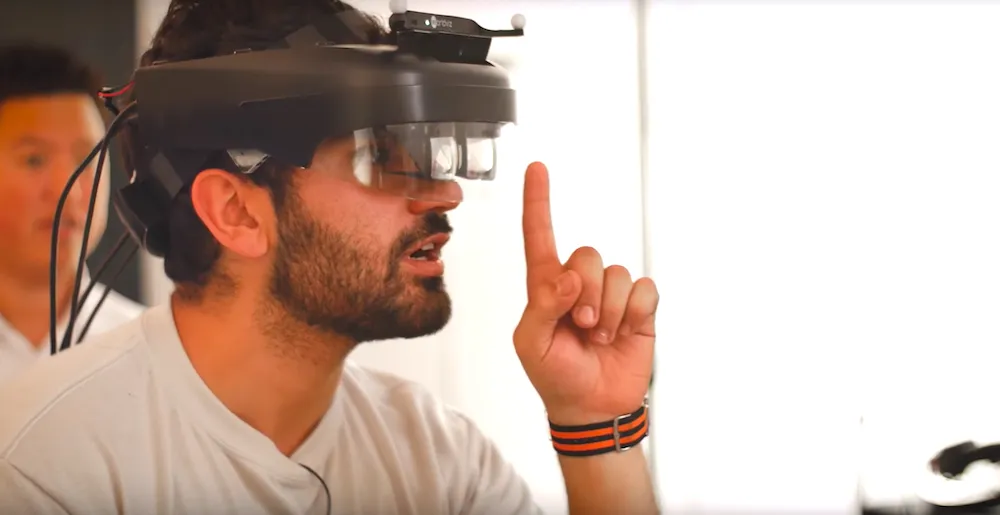UploadVR paid a visit to the Avegant offices in California last week to try out its prototype light field display.
Avegant is best known in the VR/AR scene right now as the creators of the Glyph — a headset that puts users inside their own virtual movie theater. The Glyph arrived at an awkward stage for immersive tech and was quickly overshadowed by full VR headsets from Oculus, HTC and Sony.
Since releasing the Glyph, Avegant has been relatively quiet. Now, however, the company seems prepared to move into pioneering display technologies for augmented reality devices.
The term Avegant uses for its prototype displays is “light field,” which is a bit of a buzzword in the industry. As defined by Edward Tang, Avegant’s co-founder and CTO, a light field is “multiple planes of light coming into your eyes that can create what you would normally see in real life.”
Avegant is far from the first company to theorize and attempt to execute this sort of optic, but they are angling to be the best at its creation and distribution. According to Tang, Avegant is working on ways to make light field displays not only functional, but affordable as well. Tang thinks that widespread commercial AR will be a total “non-starter” without light fields and hopes that, by making the technology affordable, Avegant can help fast track AR’s path to commercial maturity.
During our demo at Avegant the actual tracking of the headset (done with external motion cameras throughout the room) was not emphasized. It was clear that Avegant was prioritizing one thing over every other: the display.
All the regular AR problems persisted in the Avegant demo including a restricted field of view and sub-optimal-positional tracking. However, the display itself was transformative. True to its word, Avegant has created a display capable of rendering multiple planes of focus with freakishly high resolution.
Photographers understand something called “depth-of-field” and so do your eyes. Essentially this is the realization that not all objects in an image should be in full focus at any given time. Your eyes are naturally able to focus on closer objects while blurring out others and standard VR experiences can mimic this somewhat using software. Avegant’s solution, however, aims to create true depth-of-field for AR. Its light field displays allow your eye to switch focus on multiple virtual objects via a hardware solution, not a software illusion.
I could feel my eyes working to refocus as I switched my attention between objects during my demo. That alone is a significant breakthrough for creating realism in augmented reality.
Tang describes what we saw as an “optics prototype only,” one that is only meant to show what Avegant’s new displays are capable of. The company declined to comment on what its final market strategy will be and whether or not it will continue making its own headsets or license these displays to other OEMs.
You can see our full impressions in the discussion below:
Tang made it clear the Avegant prototype is “in no way a commercial product” and that we may end up seeing Avegant light fields in a “variety of form factors.”
One of these form factors could be the separate “cosmetic prototype” of which we only got the briefest glimpse. This design suggested the displays could one day fit inside a much more ergonomic, and fashionable, headset.
[gfycat data_id=”VapidEdibleCranefly”]




























